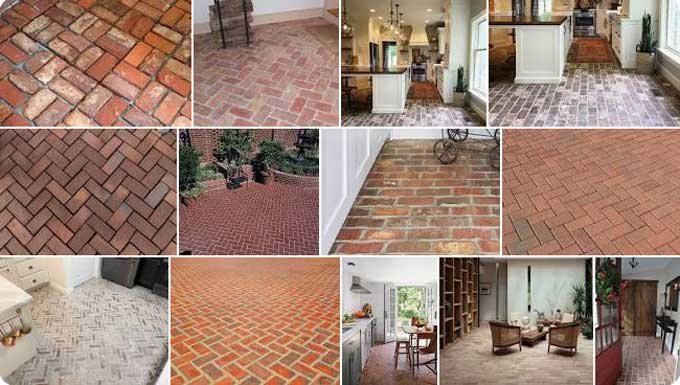
Everything you need to know about the Brick Flooring

Construction has used bricks for hundreds of years. Floors are constructed with kaolin and shale bricks. Using this method, bricks are given a smoother texture and finish that is necessary for indoor use.
This method of brick construction is durable and strong and can easily withstand the test of time. It also adds a touch of beauty to any space, making it look more sophisticated and luxurious. Let us know more about brick flooring.
Brick flooring refers to a type of flooring that is made from bricks. This flooring option has been used for centuries and is popular in various parts of the world, especially in older buildings and historic homes.
Brick flooring can be made from a variety of different types of bricks, including reclaimed bricks, new bricks, and glazed bricks. The bricks are typically cut to a uniform thickness and then laid in a pattern using mortar to hold them in place.
Brick flooring is known for its durability, as it can withstand heavy foot traffic and is resistant to damage from moisture and stains. It also has a unique, rustic look that can add character and charm to a space. However, it can be difficult to clean and may require periodic resealing to maintain its appearance and functionality.
Brick flooring is an increasingly popular choice for many homeowners and businesses. It is known for its aesthetic appeal and durability, as well as its low maintenance requirements. Additionally, brick is a great choice for energy efficiency, helping to keep your space warm in the winter and cool in the summer.
Benefits of Brick Flooring
Here are a few benefits of Brick Flooring:-
Durable structure
Brick floor coverings are incredibly long-lasting and sturdy. They exhibit excellent resistance to deterioration and fire, saving you the expense of yearly replacements and ongoing maintenance.
In other instances, the brick floor has actually worked to lessen the severity of a fire since it cannot spread as quickly from room to room.
Appearance
Brick flooring's appeal gradually increases over time, because its battered look gradually softens and becomes more appealing.
The weathered look may vary from person to person in his taste as far as the appearance is concerned, but it certainly is a simple yet effective way of providing a natural rugged effect to the room.
Economical in nature
Brick floors are available as pavers, therefore their thickness, when used as a floor covering, is different from their thickness when used in masonry buildings.
As a result, the cost is reasonable for the user. In reality, the price can be decreased even more based on the type of material utilized, namely the class and native substance of the brick.
Provides a warm sensation
We are aware that stone flooring can become quite difficult for them to walk on during the winter. Brick floors, on the other hand, tend to stay warm even in the colder months, therefore this is not the case with them.
One might say that the temperature is rather consistent and mild. The outcomes are fantastic when combined with radiant floor heating.
Easy maintenance
The nicest thing about brick flooring is that it already hides a lot of stains and filth thanks to its naturally uneven look. Moreover, its rough surface lends itself to simple and rapid upkeep.
Bricks have the incredible quality of being recyclable as well. Bricks can thus be salvaged from structures that are being repaired or torn down and utilized as pavers for flooring.
Various designing options
There is a wide range of design alternatives accessible when using bricks. Bricks used for flooring can have their color and size changed, as well as how they are arranged.
The types of flooring designs that are accessible are likewise many and diverse. No two brick floors are the same until they have been painted over, and each pattern can be as distinct as the next.
Drawbacks of Brick Flooring
Here are a few drawbacks of Brick Flooring:-
Not so comfortable
Brick floors are durable, but they also have the propensity to be too hard to walk comfortably. The threat of breaking items that are falling just makes it worse.
To learn more, watch the following video tutorial.
Video Source: MFA Civil Engineering
Moreover, bricks are often only appropriate for use on ground floors due to their inherent self-load, which necessitates the use of deeper beams.
Porosity of Brick
Bricks are porous, which is a well-known fact. Liquids spilled onto a brick floor will percolate if the surface is not given the correct surface resistance and barrier, resulting in long-term impacts including discoloration and fungal development. To stop water percolation, you must employ sealants for this reason.


